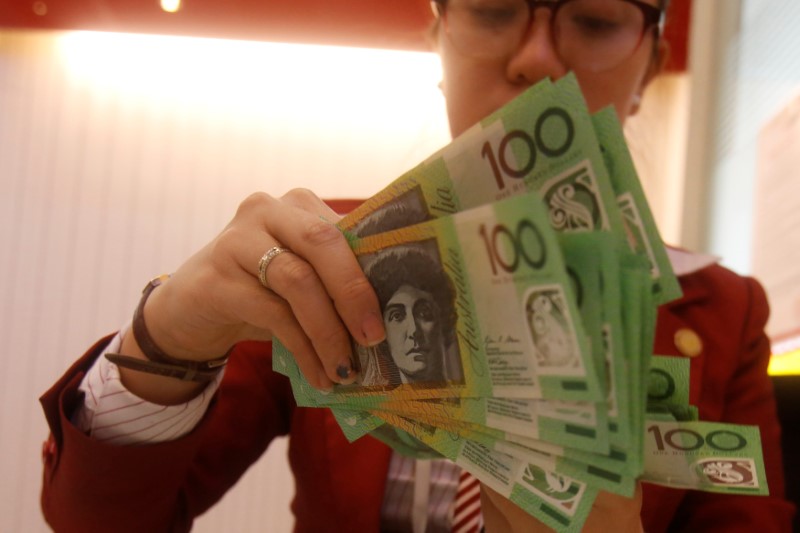By Wayne Cole
SYDNEY, Oct 25 (Reuters) - The Australian dollar sank to its lowest since mid-July on Wednesday after a surprisingly subdued reading on domestic inflation further diminished the chance of an increase in interest rates for months to come.
The Aussie AUD=D4 slid 0.6 percent to $0.7727, breaking under the recent trough of $0.7733 and threatening a pullback to the 200-day moving average at $0.7694.
The retreat came after data showed Australia's consumer price index (CPI) rose 1.8 percent for the year to September, below market forecasts of 2.0 percent. inflation also came in short of forecasts at an average 1.85 percent, missing the floor of the Reserve Bank of Australia's (RBA) 2-3 percent target band for the seventh straight quarter.
"In terms of core inflation, the retail margin compression story that's driving inflation lower hasn't abated," said Henry St John, an economist at JPMorgan (NYSE:JPM).
"We're already of the view that the Reserve Bank will be on hold in 2018. They are not in a position to hike rates in the medium term and these numbers confirm that."
Investors seemed to agree with futures for interbank rates 0#YIB: moving to price out almost any chance of a hike in the next few months. A quarter-point rise in the current 1.5 percent cash rate is not fully priced in until November next year.
That is a marked contrast with the United States where the Federal Reserve continues to flag a rate rise for December. The divergence has in turn sharply narrowed the premium over U.S. debt offered by Australian bonds.
Yields on Australian 10-year paper AU10YT=RR were at 2.78 percent, shrinking the spread over U.S. paper to 37 basis points from 58 basis points late last month.
Australian government bond futures firmed, with the three-year bond contract YTTc1 up 3 ticks at 97.900 and the 10-year contract YTCc1 1 tick to 97.2050.
The drop in the Aussie dragged on an already shaken New Zealand dollar, which was down at $0.6898 NZD=D4 having fallen 0.9 percent on Tuesday.
The kiwi has been under heavy pressure since the country's left-leaning Labour Party won control of government with the help of two minor parties. The coalition is proposing policies seen as less welcoming to foreign investment.
Plans include cutting back on immigration, raising the minimum wage and altering the mandate of the Reserve Bank of New Zealand to include employment and not just inflation.
Analysts suspect the latter could mean interest rates stay lower for even longer than the RBNZ is currently predicting, with markets already not pricing in a hike until 2019.
"The NZ election has clearly been a negative factor for NZD/USD, even after accounting for the usual drivers," said Westpac currency analyst Imre Speizer.
"The technical target for the week ahead is the $0.6820/0.6900 area."
New Zealand government bonds 0#NZTSY= extended their recent sell off, with yields 2.5 basis points higher.
